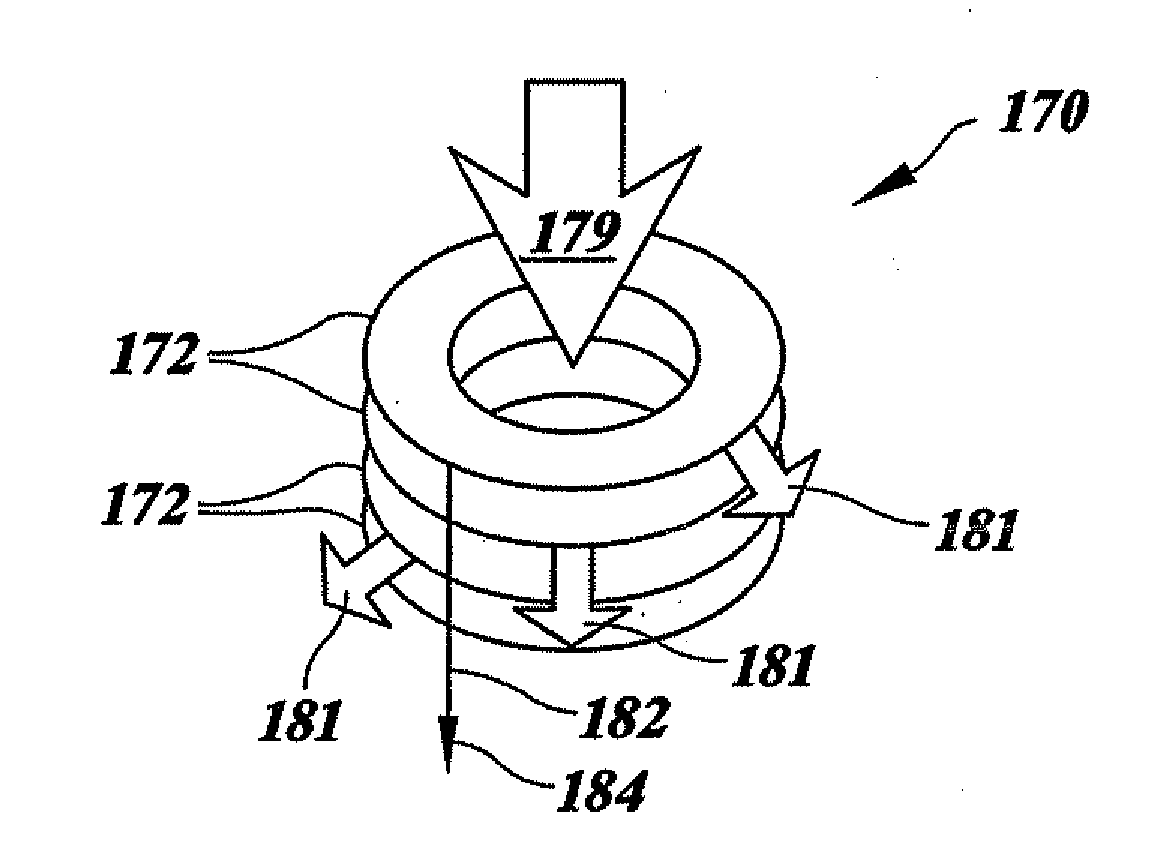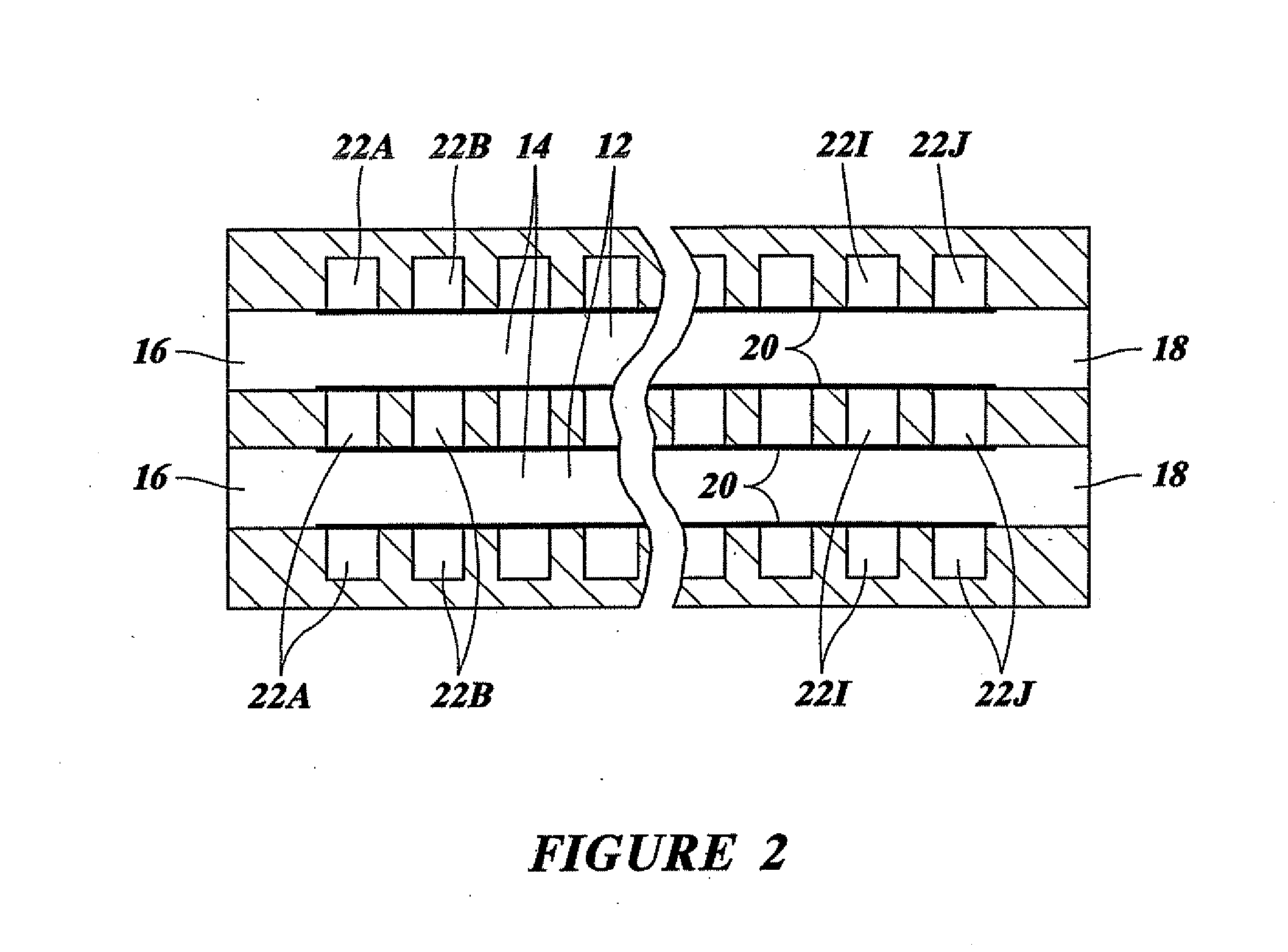Separation devices and processes
a separation device and process technology, applied in the direction of membranes, separation processes, filtration separation, etc., can solve the problems of increased power required to maintain the flow through the membrane, increase the cost of the separation process, and shift in the cut-off size, so as to achieve enhanced permeation throughput, high shear rate, and high efficiency of use of the entire porous medium
- Summary
- Abstract
- Description
- Claims
- Application Information
AI Technical Summary
Benefits of technology
Problems solved by technology
Method used
Image
Examples
example
[0057]The cross flow device 30 shown in FIGS. 3 and 4 and the previously described test setup incorporating the cross flow device 30 were used to filter raw skim milk (0.08% milk fat) at 127° F. The target pressure drop PG along the gap 44 was 20 psi to produce a shear rate of 7×105 inverse seconds.
[0058]Prior to initiating the test run, conditions were set to prevent Starling flow reverse pressure rupture of the membrane and to prevent premature fouling of the membrane. The target feed milk flow rate was established in a bypass-to-drain upstream of the test fixture, at the target flow rate, pressure and temperature. The test fixture was prewarmed with water and the retentate valve was set to produce half the target pressure drop PG. Then the feed milk pressure was reduced to half PG; water flow to the test fixture was stopped; and milk flow was diverted into the test fixture. The permeate valve was opened very slightly to allow minor permeate flow, reducing the permeate pressure an...
PUM
| Property | Measurement | Unit |
|---|---|---|
| width | aaaaa | aaaaa |
| height | aaaaa | aaaaa |
| widths | aaaaa | aaaaa |
Abstract
Description
Claims
Application Information
 Login to View More
Login to View More - R&D
- Intellectual Property
- Life Sciences
- Materials
- Tech Scout
- Unparalleled Data Quality
- Higher Quality Content
- 60% Fewer Hallucinations
Browse by: Latest US Patents, China's latest patents, Technical Efficacy Thesaurus, Application Domain, Technology Topic, Popular Technical Reports.
© 2025 PatSnap. All rights reserved.Legal|Privacy policy|Modern Slavery Act Transparency Statement|Sitemap|About US| Contact US: help@patsnap.com



